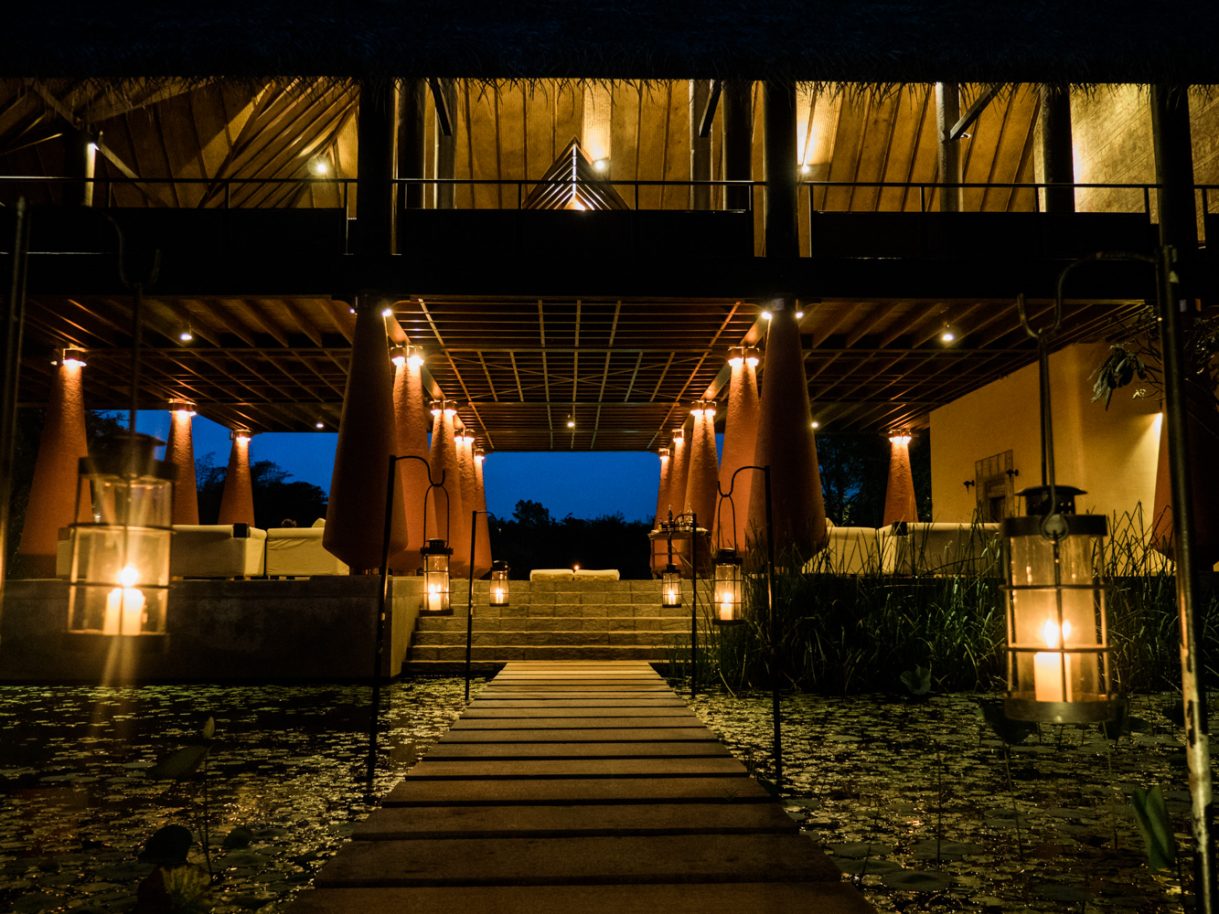It’s pitch black and I’m creeping along a trail through dense Sri Lankan forest when my thoughts suddenly turn to snakes. I don’t know why I didn’t think of them earlier, but it occurs me that I’m currently walking under suspiciously serpentine-looking branches, wrapping my fingers around trailing trunks and vines in blasé fashion.
Quickly pushing my hands into my trouser pockets and picking up my pace, I catch up with naturalist Chaminda Jayasekara whose red torch beam is the only light sweeping the surrounding trees and thorny brush.
“Snakes? Oh you don’t need to worry about them,” he whispers with a laugh when I ask about the chances of an encounter. “What you need to be looking for is a pair of eyes. That’s how we find them, you see. Their eyes will stare out at us from the dark.”
In any other scenario that might sound even scarier. Except he’s already shown me photos of the animal we’re out here searching for and it couldn’t be less frightening. In fact, the northern grey slender loris would be better described as adorable. Indeed, if you didn’t know better, you’d be forgiven for thinking it was an animal dreamt up in the imagination of a Disney cartoonist. Every feature seems exaggerated to increase its cuteness factor.
About the size of a chipmunk with long, pencil-thin arms and legs, this shy, furry, nocturnal primate is found in the tropical forests of Southern India and Sri Lanka and grows to between 6 and10 inches in size. It has a round head dominated by two large, close-set brown eyes that seem as big as dinner plates in its small and somewhat bemused-looking face. These peepers flank a little, long snout, which ends in a heart-shape nose. Dark, browny-black circles of fur surround the eyes, like spectacles, and it has relatively big, round ears poking out of its grey fuzz, all adding to its appeal.
Cuddly looks aside though, what makes the slender loris so special is its scarcity. This is a rare animal that has suffered habitat loss, human persecution and the sometimes-troublesome legacies of farming – like electric fences – for many decades. This has reduced numbers dramatically and led to some sub-species, such as the Horton Plains Loris, coming dangerously close to extinction.
However the fortunes of the northern grey slender loris have received a boost in recent years, thanks to pioneering conservationists like my guide, Chaminda, and the ecological foresight of his employers, Jetwing. The forest we’re walking through is part of this pioneering hotel group’s eco-property: Jetwing Vil Uyana, the jewel in what is the brand’s considerable environmental crown and – today – a vital sanctuary for this beautiful and endangered creature.
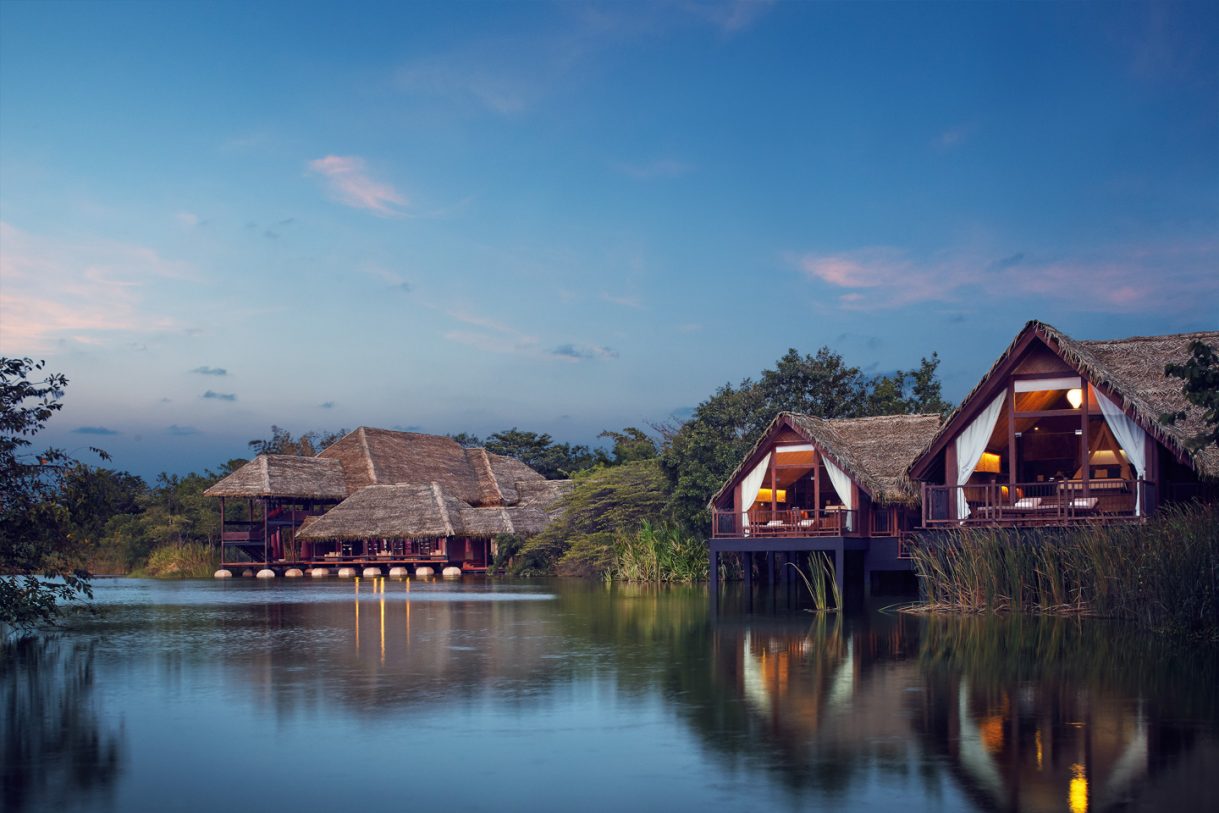
A stone’s throw from the ancient rock fortress of Sigiriya in the heart of Sri Lanka’s famous Cultural Triangle, Jetwing Vil Uyana was created to be a groundbreaking blend of luxury and sustainability set in its own 28-acre private nature reserve. Here 36 lavish dwellings – private, thatched villas with their own hot tubs, huge baths and giant beds – are spread out across a bio-diverse, wildlife-rich spectrum of habitats that includes wetland, organic rice paddy, garden, lake and forest. Tree-fringed wooden walkways, lit up at night, thread between the reed beds, ponds and the dwellings. Circling these is a raised web of interlinked paths connecting the property’s communal spaces: a gym, Ayurvedic spa and treatment room, an open-sided library, lounge and bar. There’s a breathtaking outdoor pool overlooking one of the lakes and a wonderful, two-storey fine dining restaurant. Importantly, all across the reserve, there’s the space and setting for nature and guests to co-exist in harmony.
Most remarkable of all is the fact that fifteen years ago, none of this existed. This spot was slash-and-burn agricultural land gone to seed, a world away from the lush, biodiversity landscape found here now. Then, in 2002, a vision was born between Jetwing conservationists and its directors: to create a manmade wetland reserve in this region of Sri Lanka’s Dry Zone. It would be somewhere that travellers could chill out in high-end luxury and the natural world could move back in unimpeded. Great for guests, great for the local wildlife.
The inspiration had come from the Royal Society for the Protection of Birds (RSPB) and the London Wetland Centre, the urban oasis for birds, animals and people in Barnes, ten minutes from Hammersmith in the UK’s capital. Once feasibility studies had returned positive news for the Vil Uyana site, work began hollowing out the ‘tanks’ or manmade reservoirs and building the hotel’s structures. Over 95% of the tree cover now here was planted and, sure enough, wildlife was soon moving back in. Crocodiles quickly colonised the waterways and many species of birds and butterflies were drawn to the newly thriving flora and fauna. By the time Jetwing Vil Uyana opened its doors in 2006, it was clear it was going to be somewhere special.
While it was hoped that the northern grey slender loris might make an appearance, nobody was holding their breath. So when the first calls and sightings were confirmed in the regenerated forest in 2010, Jetwing changed the plans to create more dwellings in that area and took steps to create a special three-acre protection site, building a special conservation and education centre nearby.
It was here that I’d met Chaminda to begin our Loris Night Walk. The resident naturalist devised this initiative to raise awareness of the primate and give guests the chance to glimpse this rarity in its natural habitat. It says something about the animal’s scarcity that both the BBC and National Geographic spent weeks here filming the loris in its arboreal habitat for TV. “It’s because we have about a 90% success rate on our walks,” Chaminda informs me. “Which means Jetwing Vil Uyana is one of the best places to see slender loris in the wild on the planet.”
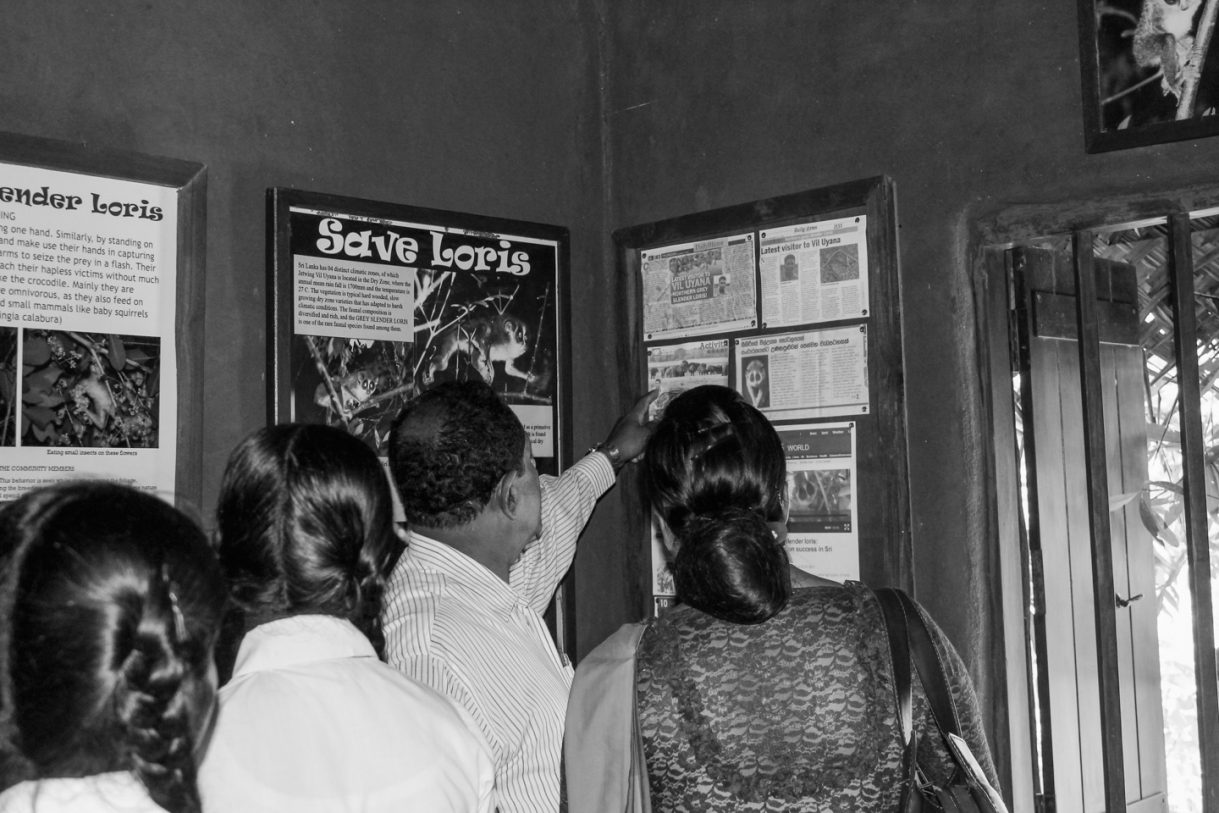
The trips usually run sometime between 6pm and 9pm and are $30 per person, a third of the money going back to fund the conservation project. Chaminda also takes guests after dinner, which seemed like a sensible option to me. So after a royal feast in the Aspara restaurant, entertained by flying foxes, white-breasted water hens, brahminy kites and kingfishers around the waters below, we’d set out from the education centre into the dark as the singing crickets reached a crescendo.
Now, a few hundred metres on, we round a bend in the trail and reach a little stream. The forest comes alive. Fruit bats flick like ghosts overhead. Chaminda pauses and shines the torch on a handsome little tree frog frozen and staring, goggle-eyed, in my direction. Then movement in the undergrowth. Not a loris though. Too low. I see a flash of black and white fur in the torchlight. “Ring-tailed civet.” Chaminda hisses. This possum-like mammal is on the hunt for mice and fruits. Also seen here regularly in the dry season between May and October is the fishing cat – a rare and stocky resident of wetland terrains about twice the size of a domestic cat. We find claw marks at the base of a branch, and see the flash of a yellow eye hidden in a reedy bank over a pond, but it’s too wily a wild cat for us to catch on camera.
After about twenty minutes, Chaminda is in the zone. He’s panning left and right between the canopies. Then we strike gold. “There,” he whispers. “Loris.” I flick on my red-beamed headtorch and look around and catch those eyes, exactly as he promised. Those big eyes staring back. Then the little primate turns its attention to finding dinner and creeps silently along, wrapping its oddly human-looking toes carefully around each branch. Suddenly there are more of them. The first is feeding on a winged insect. The second, further on, appears to be hanging between trees on hind legs, waiting for prey to pass so it can grab it with those lithe front limbs.
The nightly range on the search for prey is about 200m and despite their slow movements, Chaminda assures me loris can pick up speed when threatened. As we witness these amazing primates hunting he explains that their name comes from the Dutch word ‘loeris’ meaning fool, joker or jester. They are impossibly cute things to look at, so I’m surprised to learn that some of their persecution has been down to being labeled as ugly creatures and old, unfair superstitions about being omens of bad luck. As Chaminda points out, being endangered, the people who hold these misguided opinions have almost certainly never even seen one themselves.
An hour later, as I follow Chaminda back around trail towards my dwelling for the night, we see two more loris, apparently playing. It’s an absolute joy and we snap away on our cameras. Observing them thriving is the opposite of a bad omen; it is a privilege and testament to the health of these habitats and the pioneering work that goes on here.
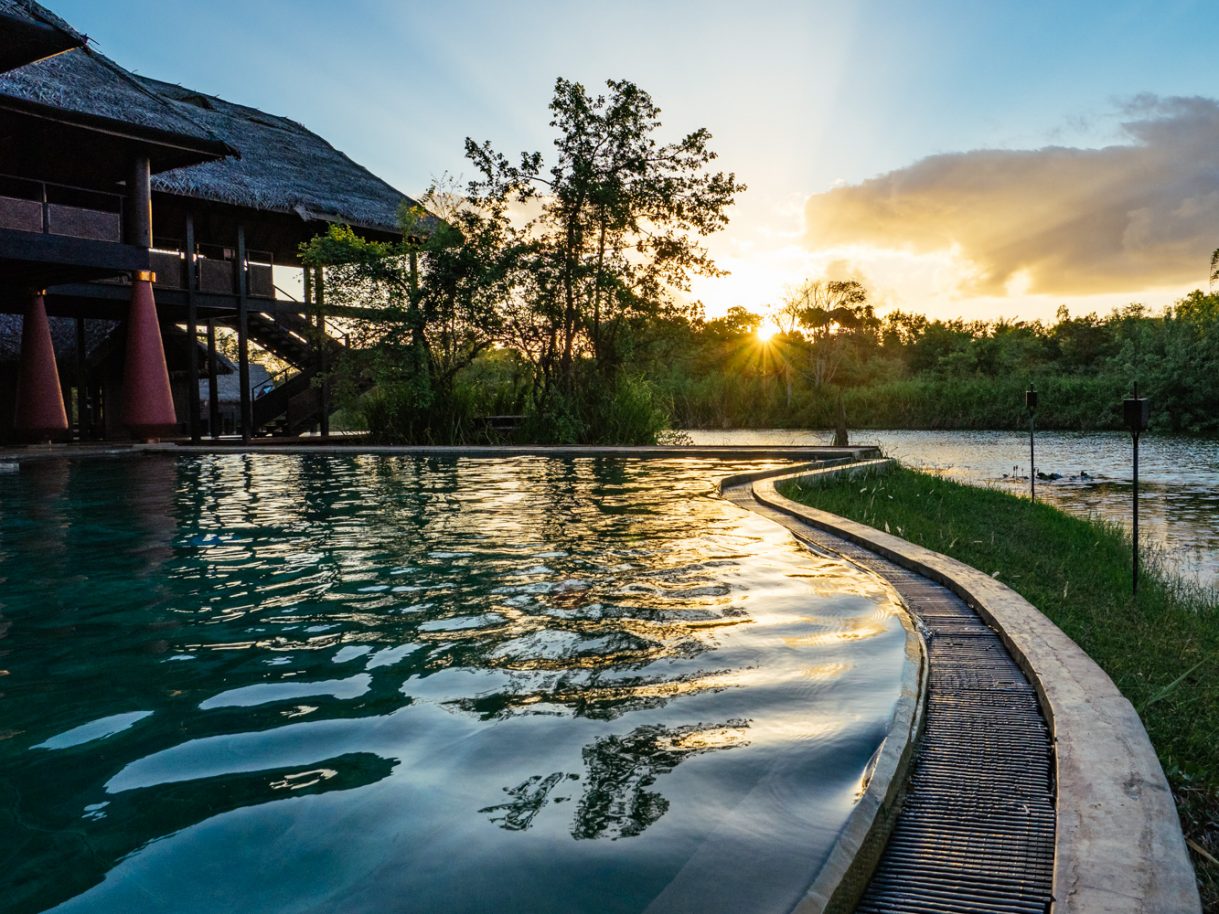
The next morning, I take an early swim in the pool, resting at the edge and looking out over the lake below, which has, famously, its own resident crocodile. The birdlife is extraordinary. I spot prinia, tawny-bellied babblers, yellow-billed babblers, leafbirds and sunbirds. Then, after lunch, we’re off to what is another of this region’s natural spectacles, albeit on a very different scale.
Minneriya tank or reservoir, this relatively small wildlife park boasts a huge range of habitats, from dry tropical forest to wetlands and the all-important grasslands; all-important because the combination of the tank and these rich grasslands draws Minneriya’s biggest visitor. Literally. For this is the site of the annual gathering of hundreds of elephants, the largest congregation of Asian elephants anywhere in the world. It’s the kind of thing you don’t want to miss if you have the chance.
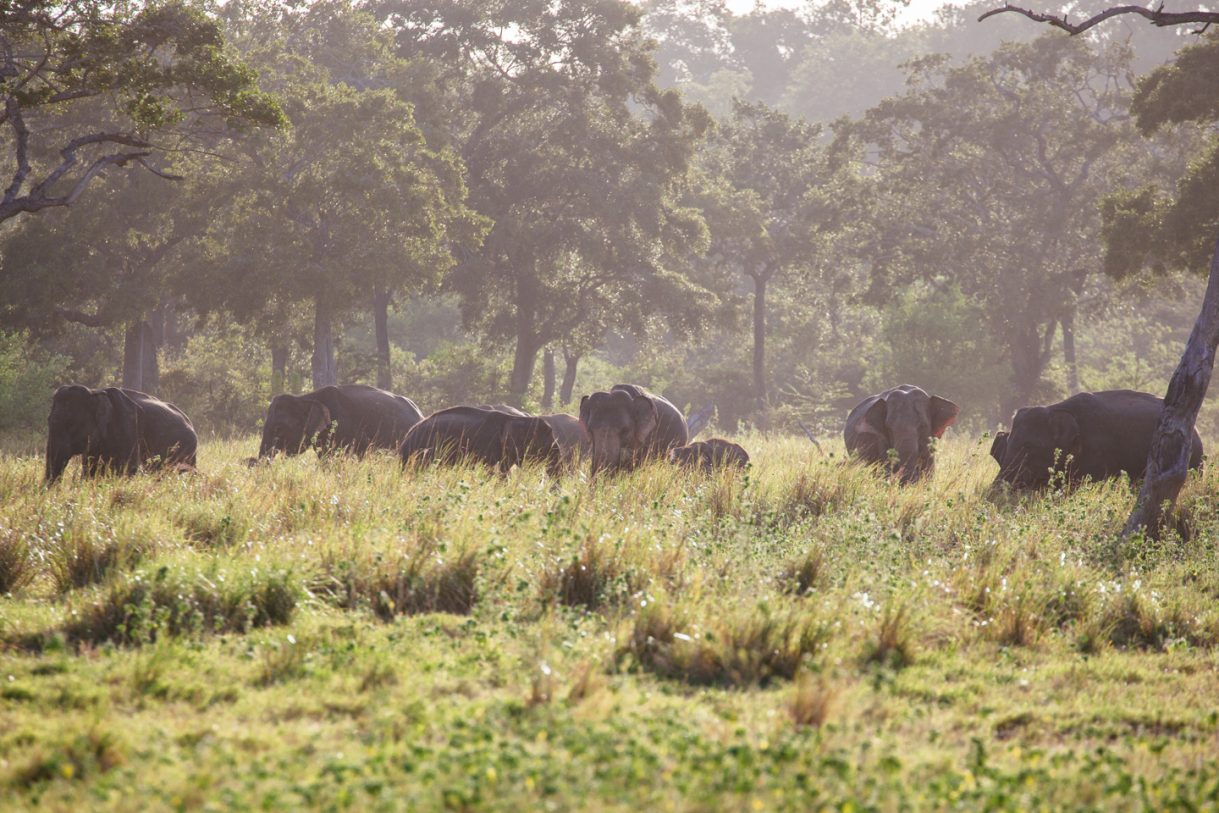
The ‘gathering’ happens during the dry months from late June to October when this tank becomes an essential stop on the migration route for the many elephants from the surrounding areas, even as far away as Trincomalee. As the grass and water dries up elsewhere, they know to come here where both are in abundance.
Passing into the park in an open-topped jeep, we’re a little early in the season but our fingers are definitely crossed. Winding our into thick evergreen dry zone forest, before emerging into plains, we catch sight of Sri Lankan jackals and spotted deer. Then, as the jeep pitches and rolls alongs the bumpy trails, we record other species going about their business: sambar, purple-faced langur monkeys and torque macaques. A monitor lizard skids across our path as we hug the tree-line, looking out for elephants, and then I spot an extraordinary looking bird: the Malabar pied hornbill with what looks like a beak on top of a beak.
We take a wide circuit and return around in a figure eight when we first sight the unmistakable line of grey in the distance. Elephants. They are moving from the dense scrub where they’ve been sheltering from the heat of the day across the grasslands towards the water in huge numbers. We roll our way closer to get a better look.
As we approach we see they’re gathered loosely in groups. Females and babies cluster, play and eat together; the males take positions outside. Up close, practically eye-to-eye, there are few things as impressive as a wild elephant and, with the engine off, we’re quickly surrounded by these giant beasts. We try counting them but keep losing track at around a hundred. Waves appear and slide past. Giving up we resign ourselves to just enjoying this incredible moment, wide smiles on our faces, as the elephants graze contentedly under a sky beginning to bruise with dusk. Once seen, you appreciate why this is listed at number 6 in the Lonely Planet “greatest wildlife experiences in the world”.
Only when they’ve all moved on to the water’s edge do we fire up the engine and make our way home to Jetwing Vil Uyana, downing the refreshing watermelon juice that is waiting for our arrival. In the areas around the restaurant, candles have been lit in a breathtaking display that shows this incredible eco-resort in its true glory.
Making my way up to the restaurant for a sublime rice and curry, made with produce from the property’s own organic farm, one of the waiters points out the resident crocodile close to the lake below. He is lying up on the bank fast asleep and looks about as happy as I can imagine a crocodile can look.
But who can blame him? In this natural wonder of a place, it’s impossible to feel otherwise.
